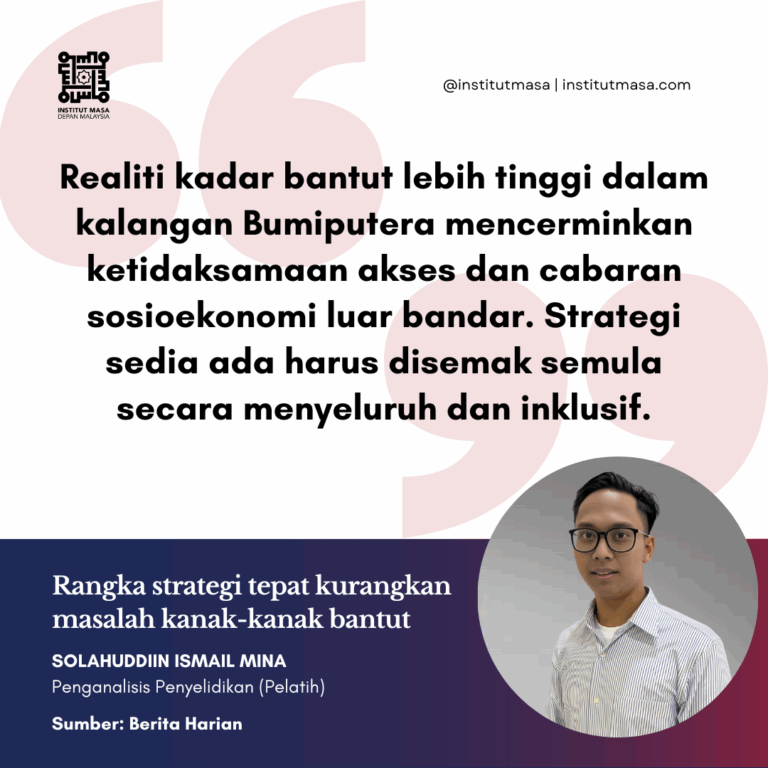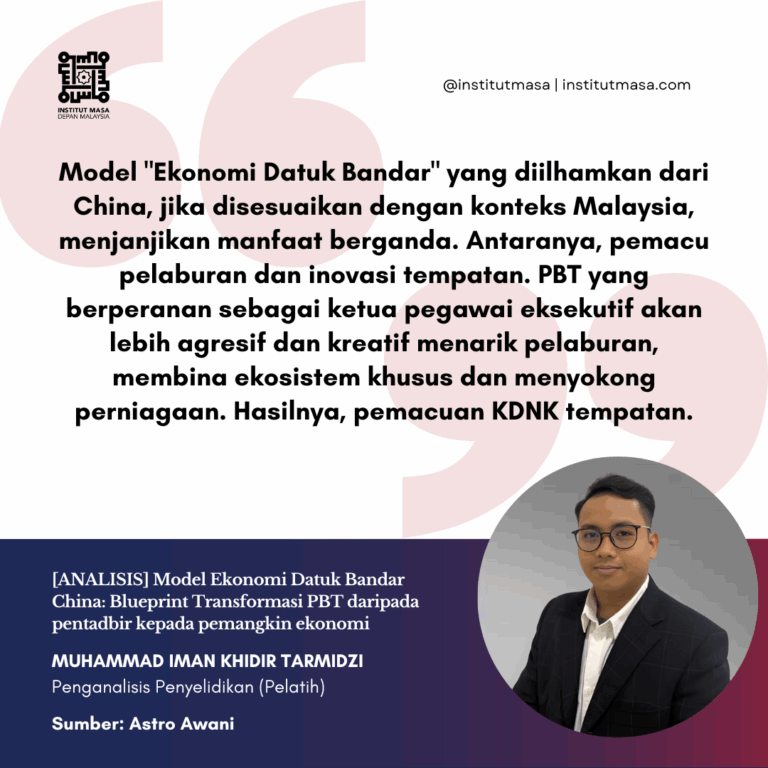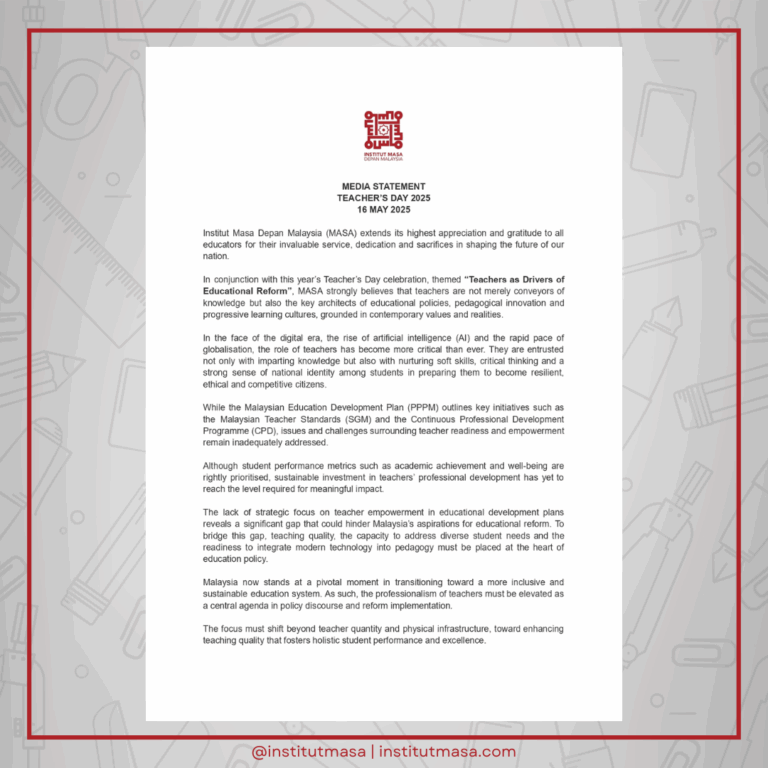By Bryan Sim Chee Hann, Research Analyst (Intern), Institut Masa Depan Malaysia
Research and developing a better understanding of public transport models such as those in Hong Kong and Japan, could serve to be beneficial in terms of planning and developing a viable, good public transport system for Malaysia.
Public transport system and accessibility in Hong Kong and Japan is said to be among the best in the world where in Tokyo, for instance, 80 per cent of jobs and the population in the city are well connected within one kilometre of a metro or suburban rail station.
Also, there is a need for measures and policies aimed at reducing carbon footprints incorporated in the development of Malaysia’s public transport system. It is, therefore, imperative that Malaysia joins in the fight against climate change with targeted policies.
In this respect, the positioning of train stations perhaps requires a reconfiguration so as to make its connectivity and coverage, more accessible and wider. The proportionality with regards to the population density needs to be taken into account. Further improvements made to the system will help mitigate traffic congestion and related woes faced by public transport users, especially in major cities such as the Klang Valley.
A comparative study will definitely help in policy creation and solution generation within the system. One of the ways is by incorporating or integrating certain specific features or characteristics of current build-up and composition of systems of models adopted by other countries.
Mega public transport projects such as the most notably high speed railway project between Kuala Lumpur and Singapore, the Johor-Woodlands RTS Link as well as the Electrified Double Tracking rail, if implemented, could have been crucial in solving the country’s transportation woes and issues.
Clearly, we have been seeing progress under the current government in enhancing the current system and infrastructure through the recent allocation of RM115 million to subsidise My50 and My100 holders in using public transport.
This move would allow Rapid KL to offer Klang Valley commuters who are My50 pass-holders, free rides for a whole month on the following transport services – MRT, LRT, BRT, Monorail, and the Rapid KL bus services. This initiative is beneficial in the sense that it helps alleviate the financial burden of commuters or passengers.
Initiatives for public transport users such as the Transport Ministry’s Rail Technology Expo (RTX) which took place at KL Sentral last August allowed engagement and collaborations between multiple companies, both domestic-based and international companies, government departments as well as the public.
Such engagement with the public through sessions such as brainstorming, business matching activities and seminars, serves as a good attempt at improving the overall discourse and awareness as well as getting invaluable feedback and suggestions aimed at improving the current public transport system.
Malaysians from all walks of life are able to participate to learn more about the intricacies of rail technology as well as being able to be involved in potential policy-making suggestions towards the different companies and government agencies.
This is a good stepping stone in creating sustainable policies for future transport systems. Having an event that is specifically targeted at rail technology helps in highlighting the current issues faced by allowing individuals a platform to voice their grievances as well as suggestions for new forms of implementation and strategies.
Transport Minister, Datuk Seri Dr Wee Ka Siong when launching the event, spoke of re-branding of the National Rail Centre of Excellence (NRCOE) as an organisation, to be known as the Malaysian Rail Development Corporation (MRDC).
As it would fall under the jurisdiction of the ministry, Wee said MRDC would serve as an integrated and planned coordinating body to develop the rail industry. “The MRDC will be developing professional, skilled and semi-skilled talent in the rail industry, improving standards, assuring quality as well as coordinating rail technology studies and research by higher learning institutions through collaborations with local industry players in order to keep up with the needs of the industry.”
All in all, there needs to be further works done to build on the current progress of revamping our nation’s public transport systems. With the population growing, it is important that the need of the people be catered to in as far as the public transport is concerned.
The country’s transport challenges demand bolder solutions as failure to build an efficient and functioning public transport system carries a price tag such as sizeable accumulated public debt via major transport infrastructure and high level of household debt, partly caused by car loans.
As the country’s public transport system is still a work in progress, much more definitely needs to be done to provide an alternative yet viable choices for the people.




